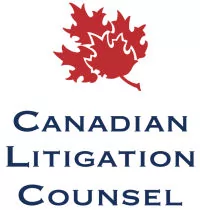- with Senior Company Executives, HR and Finance and Tax Executives
- with readers working within the Automotive, Environment & Waste Management and Insurance industries
Multi-party litigation is complex and Plaintiffs must exercise due diligence when ascertaining the identity of potential Defendants as soon as possible to avoid the expiry of limitation periods. The Alberta Court of Queen's Bench recently confirmed this in Condominium Corp. 0610078 v. Pointe of View Condominiums (Prestwick) Inc., 2016 ABQB 609. In that case, Justice Strekaff heard an application from the Plaintiffs to add a Defendant to the action six years after receiving information about their involvement.
In Pointe of View, the Plaintiffs were owners of units in a condominium complex. The complex was built between 2004 and 2005. Between 2007 and 2008, leaks were discovered in the foundation walls and parkade ceilings. The property manager hired an expert to investigate. They found a number of issues required remediation including the removal and replacement of the landscaping.
The Plaintiffs commenced an action in 2010 against the developer. The developer then issued Third Party Claims against the architects and several other subcontractors. However, a Third Party Claim against the landscaper was not issued. The Plaintiff had previously written to the developer asking for the identity of all subcontractors in 2010. No response was received.
The developer then served its documents three years after the action was commenced. After reviewing the production and conducting an examination of the developer's corporate representative, the Plaintiffs became aware of the identity of the landscaper. Two years later (six years after receiving the expert report), the Plaintiffs filed an application to amend its claim to add the landscaper. The landscaper opposed the application arguing the Plaintiffs were too late.
Section 3 of the Limitations Act provided the Plaintiffs two years to sue the landscaper. The two year clock started to run after the Plaintiffs knew or ought to have known of the landscapers' involvement in causing the damages. However, section 6(4) indicated that even if the limitation period expires, the landscapers could be added to the action if the landscapers had received notice of the claim against them within three years of the Plaintiffs first learning of the landscaper's involvement. The landscaper was first provided notice of the claim in 2015 when it was served with the application from the Plaintiffs to add them as Defendants.
The Court determined the Plaintiffs knew there may have been an issue with the landscaping when they received the expert's report in 2009. Between 2009 and 2013 (when the Plaintiffs discovered the identity of the landscaper) only one letter was sent to ascertain the identity of the various contractors involved in the project. The Court concluded that a single letter to which no response was received did not constitute reasonable diligence. The Court suggested the Plaintiffs could have performed searches, reviewed the plans and permits, or inquired with the municipality to ascertain the identity of the various contractors including the landscaper. As a result, the Court concluded the Plaintiffs had brought their application outside of the two year limitation period under section 3 of the Limitations Act.
However, an analysis under the saving provisions of section 6 of the Limitations Act was warranted. The Plaintiffs received the expert report in 2009. If they had provided the landscaper with notice by 2012 (i.e. three years after receipt of the expert report), then the landscaper could be added to the claim. However, given the evidence indicated that landscaper did not receive notice of the added claim until 2015 when the Plaintiffs brought their application to add the landscaper, the requirements under the saving provisions in section 6 of the Limitations Act were not met. As a result, the Plaintiffs' action against the landscaper was statute-barred and the application to add the landscaper to the action was dismissed with costs.
Pointe of View stands for the proposition that multi-party litigation is complex and Plaintiffs must exercise reasonable diligence in determining the identities of potential Defendants as soon as possible. Sending one letter to a general contractor and not following up is not enough. The Plaintiffs expected the general contractor to issue Third Party Claims to all of the relevant subcontractors. This was a mistake as the general contractor did not issue a Third Party Claim against the landscaper. It was then too late for the Plaintiffs to try and bring the landscaper into the action six years after receiving an expert report commenting on the landscaping.
Therefore, Plaintiffs in construction litigation should not simply sue the general contractor and expect them to issue Third Party Claims to all subcontractors relevant to the action. Rather, Plaintiffs should exercise reasonable diligence in determining the identity of all contractors and subcontractors involved in the project that may have contributed to the loss and sue them directly. Otherwise, the Plaintiffs risk their claims against those overlooked subcontractors ruled as statute-barred due to the expiry of the strict limitation periods.
The content of this article is intended to provide a general guide to the subject matter. Specialist advice should be sought about your specific circumstances.


